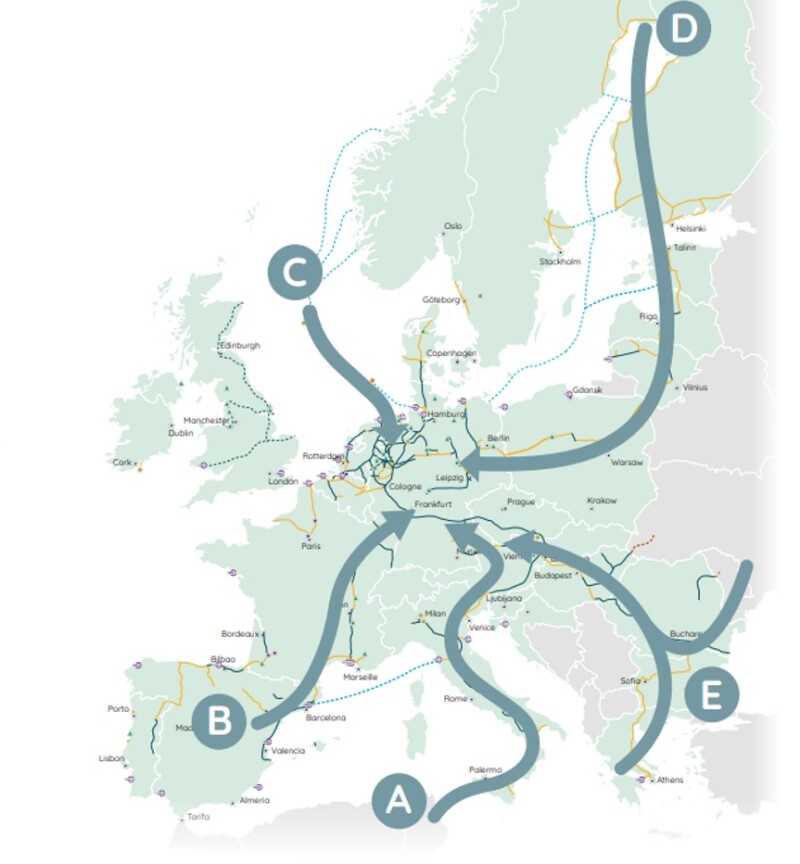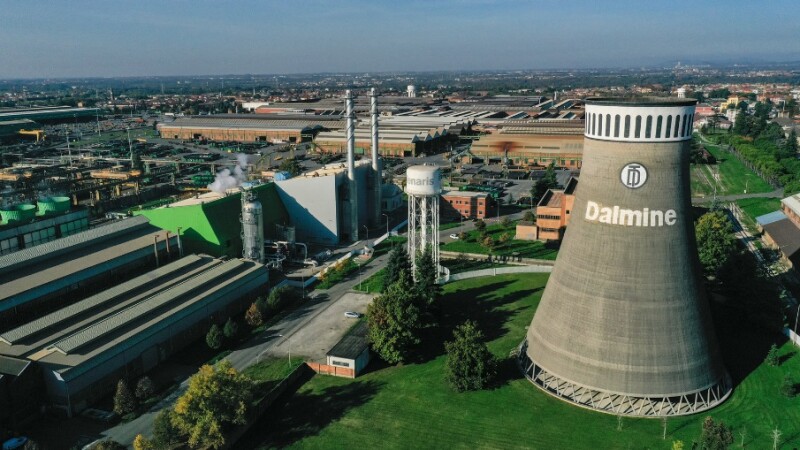Italy’s natural gas grid operator Snam, green technology innovator Tenova, and pipe producer Tenaris have launched a 6-month trial to test the use of green hydrogen to fuel a reheating furnace for hot rolling steel pipes at the Tenaris Dalmine plant in northern Italy.
The trial started in early July after the energy ministries of Italy, Germany, and Austria had announced in May that they support the construction of a southern hydrogen corridor (dubbed SouH2 in official EU documentation) to import hydrogen from North Africa to feed hydrogen demand hubs in those countries.
The ministries’ announcement delivered a dose of political will to advance the European Union’s strategy to import hydrogen supplies by 2030 to decarbonize highly polluting industrial sectors that cannot be electrified, such as steel and chemicals.
Green hydrogen is being produced on-site to fuel a burner at the Tenaris plant, designed by Tenova to work entirely on hydrogen, not only to test the technology but also to establish safety guidelines and plant management procedures, according to the partners in the project.
Snam is providing an alkaline electrolysis system to Tenaris Dalmine to produce green hydrogen. Also involved is Techint Engineering and Construction, which offers design, project management, and additional energy transition services including engineering for installation, risk analysis, and ensuring compliance with legal and safety standards.
Saipem Starts Materials Testing to Write Guidelines for EPCI and FEED Engineering
In early August, Italian certification and engineering consultancy RINA certified Saipem-developed protocols used to assess the performance of materials and welds during planning and operational phases of subsea pipelines that transport hydrogen.
RINA granted two certificates to Saipem: one for approval in principle and a second for technology qualification, which together lay a foundation for developing further qualification processes and scalable methodologies used in engineering, procurement, construction, installation (EPCI) and front end engineering design (FEED), according to Saipem.
Saipem and RINA reported details of the testing process used to develop the protocols in a paper presented at OTC 2023.
“As a general conclusion set from the testing activities, it appears that results are promising,” the paper’s authors wrote. “Saipem believes that, addressing the key requirements, offshore pipeline systems may be qualified and current gaps filled in.”
A new round of testing is planned to assess the “effects on fracture toughness behavior of lower K-rate, blending vs. 100% H2, and fatigue performance” while full-scale testing and coating tests are being evaluated, the authors wrote.
European Commission Puts SoutH2 on Fast Track for Permits, Funding Access
The European commission in 2022 added SoutH2 plus several other energy initiatives sponsored by Snam, Eni, and Tenova to the commission’s list of projects of common interest, which qualifies them for fast-track permitting and access to EU funding.
Partners in SouthH2 include Snam together with transmission system operators Trans Austria, Gasleitung, Gas Connect Austria, and Bayernets in Germany.
Also on the list is a carbon capture and storage hub offshore Ravenna known as the Callisto Mediterranean CO2 Network, which Eni and Snam are developing, Reuters has reported.
In December 2021, Eni agreed to sell 49.9% of its stake in companies operating onshore gas pipelines running from Tunisia’s border with Algeria to the Tunisian coast (TTPC) and offshore gas pipelines crossing the Mediterranean Sea from Tunisia to Italy (TMPC) to Italian energy infrastructure operator Snam.
Snam in turn operates in Albania (AGSCo), Austria (TAG, GCA), France (Terega), Greece (DESFA), Italy, the UAE (ADNOC Gas Pipelines), and has interests in the UK Interconnector and the Trans Adriatic Pipeline (TAP).
Germany could cover up to 100 TWh of its annual energy needs by importing green hydrogen through Europe’s existing natural gas infrastructure, according to a study released last month by the Berlin-based Agora Energiewende and Agora Industry think tanks.
The study examined five potential hydrogen pipeline corridors to Germany, considering factors such as production potential, political support, and technical complexity (Fig. 1).

Promising corridors include imports from Denmark and Norway via the North Sea, and potentially from Sweden and Finland via the Baltic Sea in a later stage due to the distance and technical complexity, it added.
In the long term, pipelines from Southern Europe and North Africa, especially Spain and Tunisia, can play a significant role, in addition to possible imports from the United Kingdom, Portugal, Algeria, Greece, and Ukraine.
FOR FURTHER READING
OTC 32158 Offshore Hydrogen Pipeline System Qualification: Design and Materials/Welds Testing in Hydrogen Environment
by Angelo Santicchia, Elvira Aloigi, and Salvatore Terracina, et al., Saipem; and Luigi Francesco DiVito, Francesco Iob, Andrea Fonzo, RINA Consulting.


